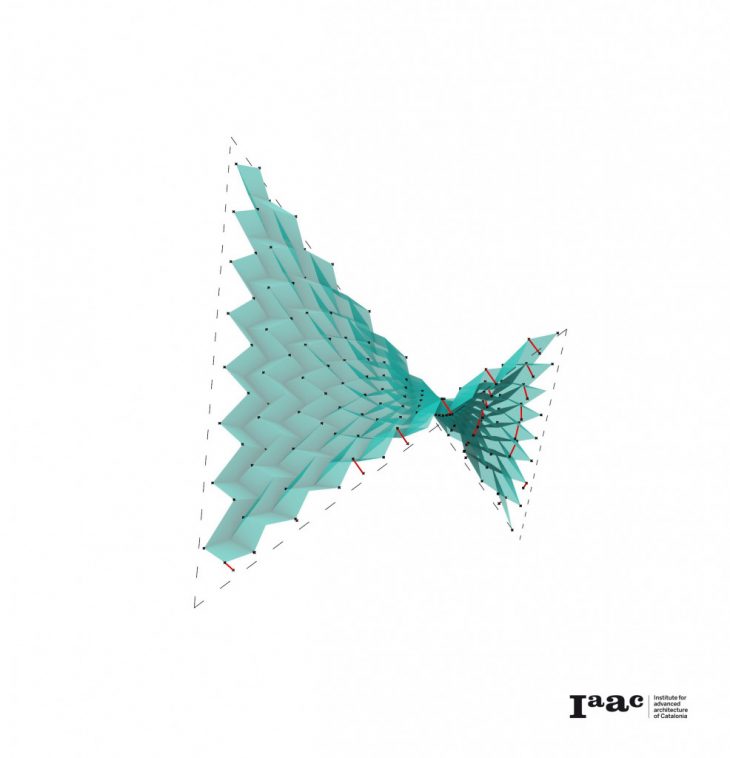
Abstract
Through knowledge of the geometric genesis of surfaces, we can solve many construction and measurement problems. The development and management of complex surfaces, i.e. surfaces with variable curvature, is a well-known problem. There are several methods for dealing with these problems associated with complex surfaces, for example, making the surface deformable or using methods of rationalisation through developable strips. One of the methods to make the surface deformable is to apply a folding pattern.
Our goal was to predict, through the use of machine learning, the folding pattern based on the geometric properties of the base surface.
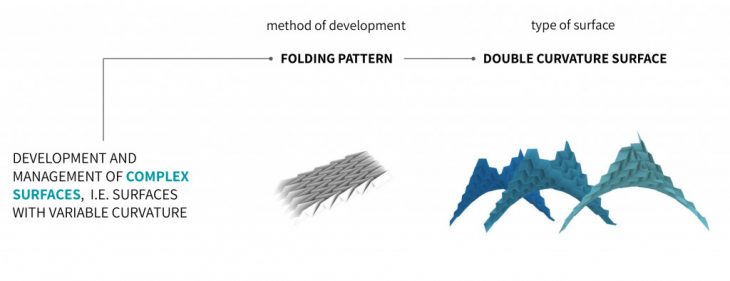
The reconstruction of the folding pattern was handled through two approaches. The first approach through the prediction of the angle between the folds and the second approach through the prediction of the displacement of the fold with respect to the base surface.
Thus, the key point of the project was to understand the best approach to use in relation to the type of base surface.
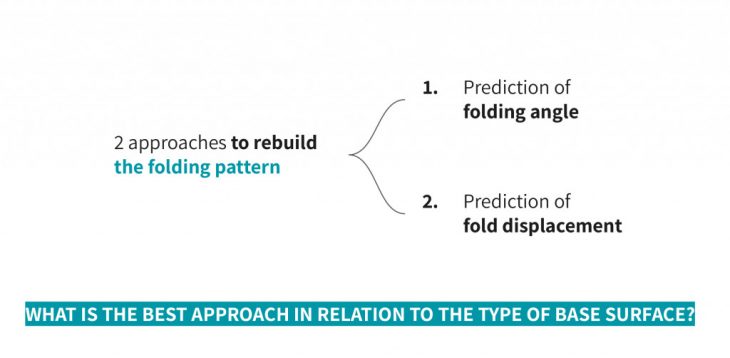
Dataset generation
The dataset was generated by simulating the motion of the folding pattern of several hyperbolic paraboloids through the kangaroo plug-in. Then the different features were extracted. The input consists of the surface vertices moving randomly along the Z axis and the dimensions of the base surface.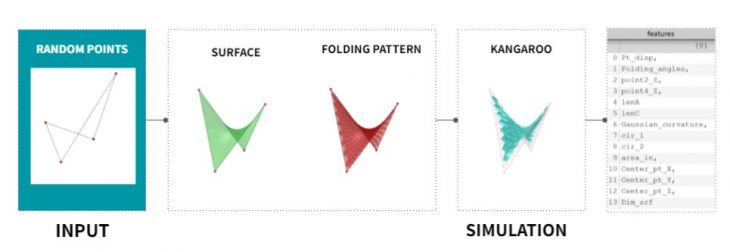
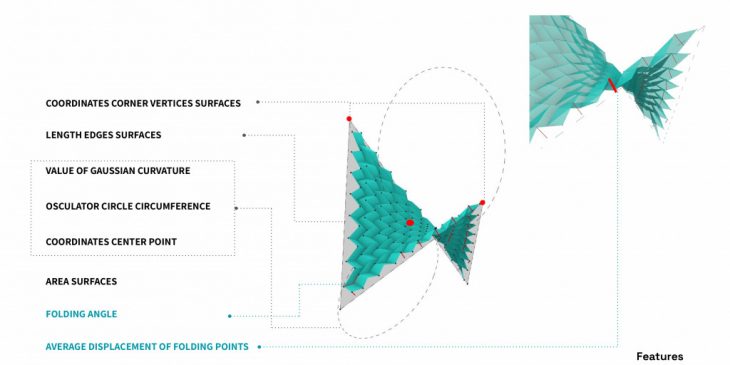
Data Analysis
Through the PCA it was possible to analyze the distribution and correlation between the data and through the vector representation of our characteristics we could group them into the main ones. Thanks to the analysis, it is possible to make appropriate changes to the dataset generation.
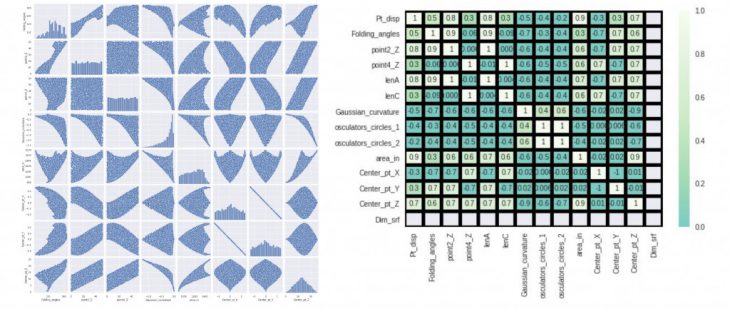
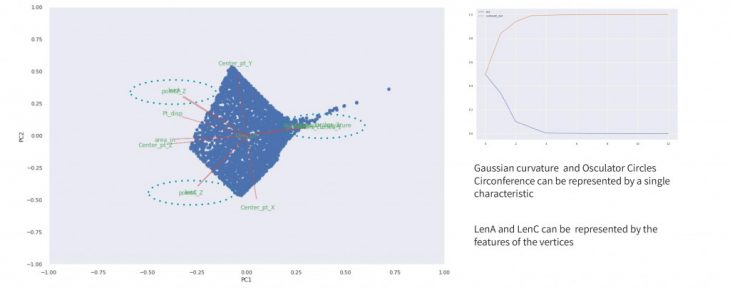
Training machine learning
The ML model used was linear regression for both approaches. The number of features used varies for both, for the first approach 7 out of 14 features were used. While for the second approach 10 features were used. Both models showed a good R^2 score right away, returning good prediction values.
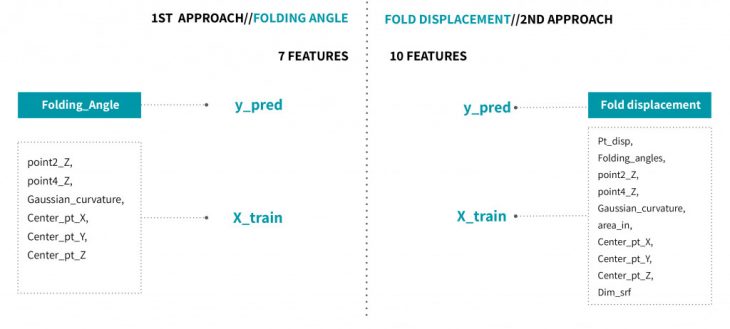
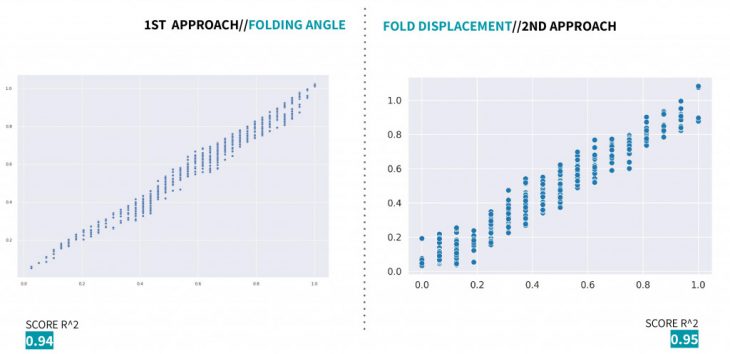
Results
We exported machine learning to grasshopper by using hops component. Therefore, that allow us to generate our predictions inside the model. In addition that allows us to compare the simulation model with the models generated by the prediction at the same time.
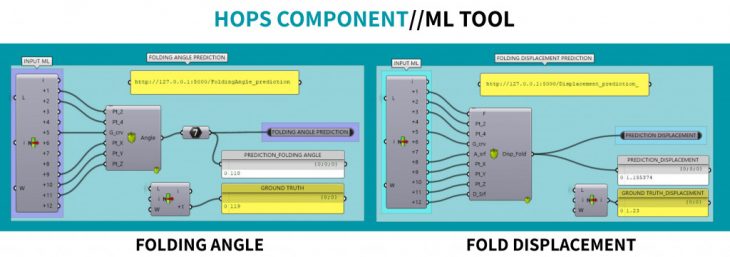
At the conclusion of the analysis carried out, it was found that the best performing approach in relation to the type of surface used is the first one. When the geometry was reconstructed the second approach with surface shapes that tend to flatten did not return optimal results in comparison to the first approach, which was very close if not entirely to the basic truth of the simulation.
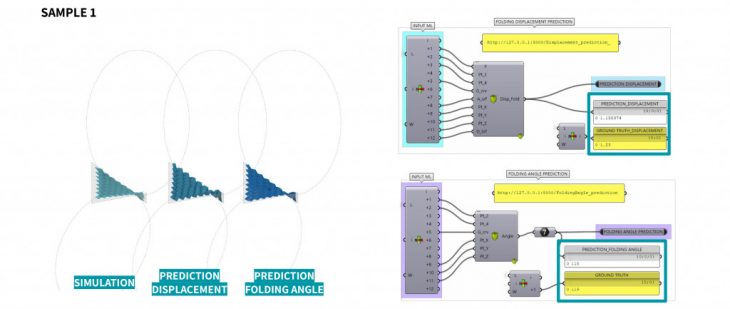
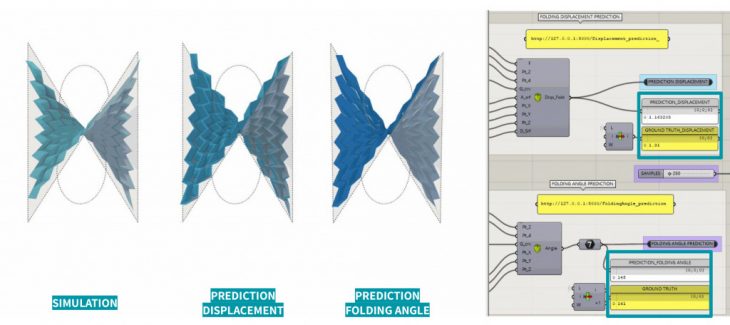
Conclusion
In the future, it would be interesting to investigate the performance of the two approaches in relation to a greater variation of surfaces and folding pattern with both positive and negative curvature.
Credits
Hyper Folding is a project of IAAC, Institute for Advanced Architecture of Catalonia developed in the Master in Advanced Computation for Architecture & Design, Artificial Intelligence in Architecture 2020/21 by Students: Laura Marsillo, Nataliya Voinova and Faculty: Gabriella Rossi, Iliana Papadopoulou
